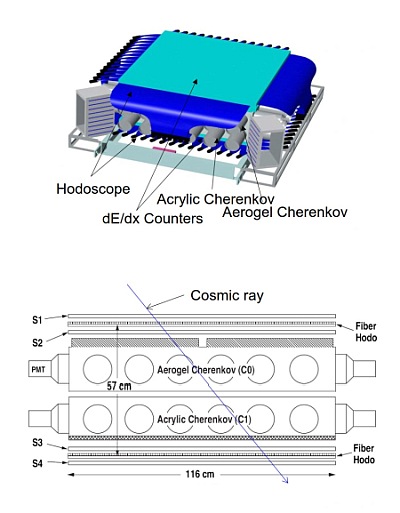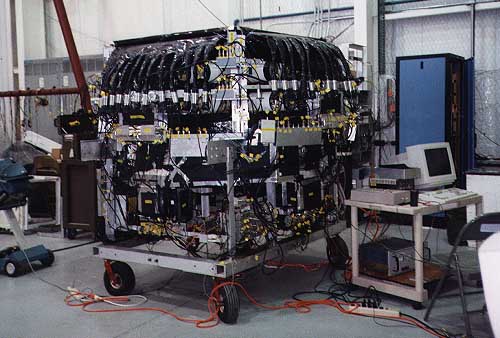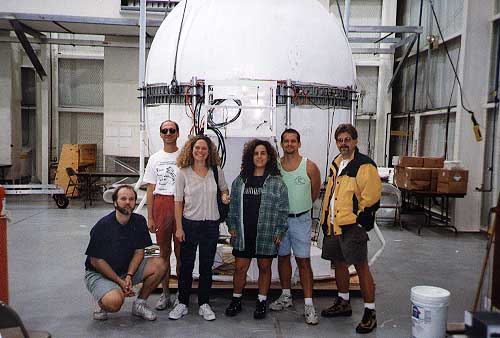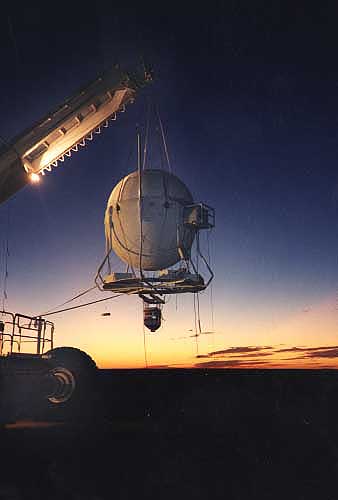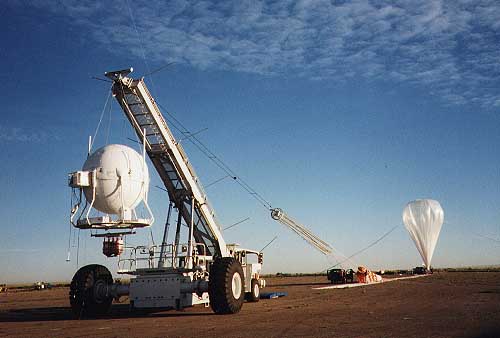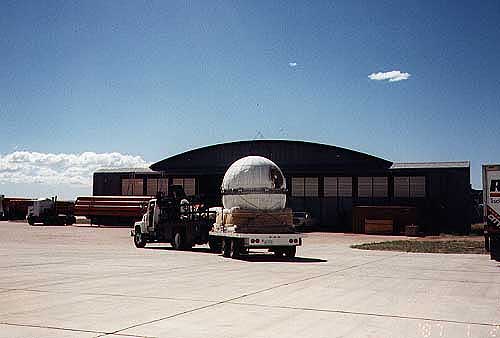Purpose of the flight and payload description
The Trans-Iron Galactic Element Recorder (TIGER) is a balloon borne instrument designed to measure the elemental abundances of Galactic Cosmic Rays (GCRs) wich are energetic atomic nuclei that originate from outside our solar system and are believed to be accelerated by exploding stars (supernova) to extremely high energies.
GCRs are of particular interest to the astrophysics community since they are one of only two types of matter that can be directly sampled from outside the solar system. They serve as a probe of the galactic cosmic ray source and the interstellar medium within our galaxy.
The TIGER experiment measures GCRs with atomic number between 26 (Iron) and 40 (Zirconium). These elements are very rare in galactic cosmic rays and are difficult to measure, requiring large detectors with long duration of exposure and excellent resolution.
The instrument comprises two hodoscopes located on top and bottom of the instrument, two Cerenkov detectors in the core and beetween this two components a pair of scintillator detectors.
The hodoscope detectors are responsible for determining the trajectory of a particle that passes through the instrument. Each hodoscope layer is composed of two planes of scintillating optical fibers, with about 1200 square fibers with 1 mm2 cross-section each. At both ends, these fibers are joined to 14 photomultiplier tubes (PMTs). As a nucleus enters one plane in the hodoscope, it will cause one or two fibers to scintillate as it enters and the light emitted is piped down the fibers to the two PMTs located at each end. A precise location of entry is given by reading out the signal in these PMTs. This information is needed to trace the angle that the particle had upon entry.
The scintillator detectors are responsible for determining the charge of a particle that passes through the instrument. They are made of a special kind of plastic called poly-vinyl toluene so when a charged particle passes through it, it excites and ionizes the molecules in the plastic. In TIGER, there are four scintillating detectors, S1, S2, S3, and S4 for redundancy purposes. The S1 and S2 scintillators are the most important for deriving the charge of a particle. If the signal in the required detectors is high enough, the software decides that a particle has indeed passed through the detector, and proceeds to read out the light output.
The Cherenkov detectors in TIGER are responsible for determining the kinetic energy that of a particle entering the detector. These detectors use an effect known as the Cherenkov effect that was put to use in High-Energy Astrophysics within the last 40 years. Since this effect is quite dependent on the charge of the incoming particle, two different nuclei entering TIGER with the same energy will emit different amounts of light into the Cherenkov boxes. In the TIGER instrument, there are two Cherenkov detectors. C1 is made with acrylic and C0 is equipped with aerogel, which incidentally holds the record for the least dense solid substance on earth. As a particle enters the light box, it precipitates the emission of Cherenkov radiation, which is detected by the 5-inch photomultiplier tubes (PMTs) located along the circumference of the ~1 m2 light box.
Details of the balloon flight
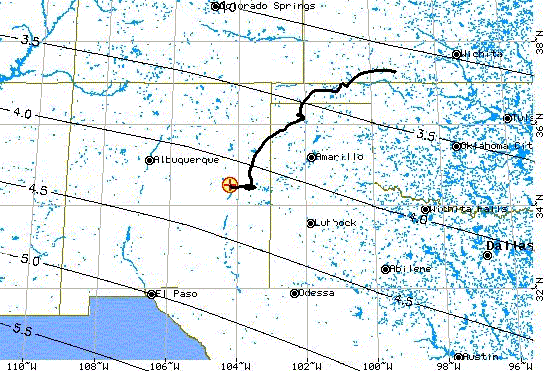
Balloon launched on: 9/24/1997 at 14:04 utc
Launch site: Scientific Flight Balloon Facility, Fort Sumner, (NM), US
Balloon launched by: National Scientific Balloon Facility (NSBF)
Balloon manufacturer/size/composition: Zero Pressure Balloon Raven 40L - 1.100.000 m3
Balloon serial number: W39.57-2-20
Flight identification number: 439N
End of flight (L for landing time, W for last contact, otherwise termination time): 9/25/1997 at 16:07 utc
Balloon flight duration (F: time at float only, otherwise total flight time in d:days / h:hours or m:minutes - ): 26 h 50 m
Landing site: 8 miles SE of Coldwater, Kansas, US
Payload weight: 4661 lbs
This was the first TIGER balloon flight with the purpose to demonstrate the instrument detection capabilities. Although the duration of the flight was not long enough to gather many of the rare nuclei heavier than iron, it did prove that TIGER had ample resolution to do so effectively.
External references
- TIGER website Goddard Space Flight Center, NASA
- NASA Balloon Flights (1989-1998) in NASA Historical Data Book, Vol. VII: NASA Launch Systems, Space Transportation, Human Spaceflight, and Space Science, 1989-1998
- The Trans-Iron Galactic Element Recorder (TIGER): A Balloon-borne Cosmic-ray Experiment Proceedings of the 26th International Cosmic Ray Conference. August 17-25, 1999. Salt Lake City, Utah, USA
644If you consider this website interesting or useful, you can help me to keep it up and running with a small donation to cover the operational costs. Just the equivalent of the price of a cup of coffee helps a lot.

